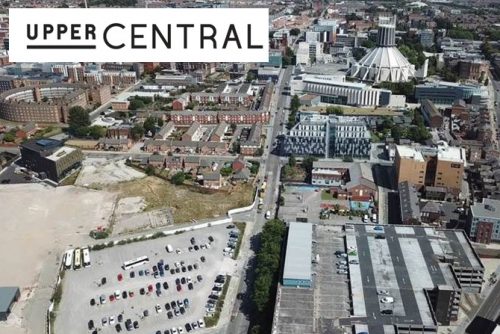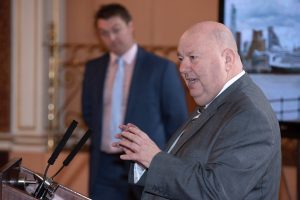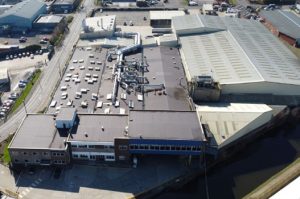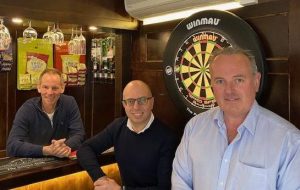Plans to upgrade traditional heart of Liverpool city centre set to be approved

Liverpool City Council’s cabinet is to receive a report next Friday, (March 6) recommending that a draft Spatial Regeneration Framework (SRF) be endorsed for the Upper Central area.
Running from Central Station to Liverpool Science Park and Lime Street to Bold Street, Upper Central will be a destination in its own right and a key part of the the Knowledge Quarter Liverpool (KQ Liverpool) Mayoral Development Zone, which currently employs seven per cent of the city’s workforce.
The vision for Upper Central is for the area to be an international gateway site to KQ Liverpool, the city’s thriving, £2bn Innovation District.
Last Summer the council staged an eight-week-long public consultation on the draft SRF, the results of which will help shape the future direction of this 56-acre site, which is a fulcrum point linking a number of composite parts of the city centre.
Upper Central will attract investment and become a magnet for the digital, tech and creative sectors with the aim of achieving three key goals:
- A vibrant new city centre district that can accommodate a mix of uses that blurs the boundaries between surrounding districts, with 2.5m sq ft of new development opportunities and up to 7,000 new jobs
- A new sustainable, walkable and recognisable gateway location within the city, promoting pedestrian movement, permeability, increased dwell time and a positive first impression to millions of residents and visitors arriving into the city centre at Lime Street or Central stations
- An exemplary mix of modern design and iconic historic buildings set within high quality public realm that creates a sense of place, distinctly Liverpudlian and attractive to residents, visitors occupiers and investors
Led by a team of independent experts, the draft SRF has looked at how best to redevelop the Lime Street area around the Adelphi Hotel, Central Station and Mount Pleasant while dovetailing Liverpool John Moores University’s Copperas Hill site, plans for the Fabric District and various private sector schemes, such as Circus Liverpool in the Lewis’s building.
To achieve this future development and investment, the draft Upper Central SRF focuses on eight key themes:
- Creation of a true gateway to KQ Liverpool and a new destination within the city
- Improving pedestrian experience and links to the rest of the city centre
- Blending a mix of uses to create a quality of place and identity
- High quality design, appropriate height, scale and massing and landmark buildings
- Provision of high-quality infrastructure
- Holistic view of development context, creating a new city district
- Preserving and enhancing heritage assets
- Collaboration and delivery with pace
The draft SRF presents a vision, key themes and development principles for six character areas within the SRF boundary, as well as a design code and illustrative spatial masterplan to guide the future development of the Upper Central framework area.
A major aspiration identified in the draft SRF is how to create a super crossing at Ranelagh Place, a new pedestrian experience along Renshaw Street, and to promote a new pedestrian route to Lime Street Station from Copperas Hill.
This will allow for improved access to the Fabric District and Paddington Village, the council’s £1bn health, life sciences, education and technology flagship development, and ensure a connection from the heart of the city centre, Liverpool One and the main retail area.
Liverpool City Council also acquired Central Station shopping centre in 2018 and is working with Merseytravel and Network Rail on proposals to expand and upgrade the station.
It is also overseeing public realm improvements for nearby St George’s Plateau, as part of the £47m city centre connectivity scheme, and has also set out an ambition to redevelop the Mount Pleasant Car Park area.
Once approved by the council’s cabinet, it is intended the SRF will be adopted as a Supplementary Planning Document once Liverpool’s Local Plan is endorsed in early 2021.
It will then be used to guide all future planning applications in the area and provide developers with detailed information of desired design and build issues, including height, scale and massing of buildings.
Liverpool City Council, which is overseeing an unprecedented £14bn of development activity, has already adopted an SRF for Paddington Village, Ten Streets Creativity District and Commercial Business District and is looking to adopt further SRFs for the Baltic Triangle, Williamson Square and Mathew Street, as well as the Waterfront.
Mayor of Liverpool, Joe Anderson, said: “Upper Central is vital to this city’s economic future and such is the scale of its potential it will be a huge employer for generations to come.

Joe Anderson
“This plan will help set the template to transform this area into a vibrant, innovative and creative district, which will be home to a large cluster of digital, tech, education and cultural assets, alongside exceptional transport infrastructure, areas of public realm and supporting use classes.
“These changes will radiate far beyond the Upper Central location and will enhance the entire city’s status as a pioneering destination with an exclusive offer, character and world-class facilities that will, ultimately, drive future prosperity for the city and its people.”
Colin Sinclair, chief executive of KQ Liverpool, added: “The exponential growth of KQ Liverpool, along with the ongoing regeneration of Lime Street, has shone the spotlight on Upper Central.
“It represents one of the greatest development opportunities in the UK and, alongside Paddington Village, will have a major impact on the city’s economy, creating thousands of jobs, in science, tech, health, education, retail and leisure.
“The SRF will truly allow us to plan a world-class development, enabling Liverpool to continue to compete with any city in Europe.”
The Upper Central SRF team consists of: Avison Young – Property Advisors, Strategic Planning and Consultation lead; K2 Architects – Masterplanning and Architecture lead; Planit-IE – Place-making and Landscape lead; Mott McDonald – Highways and Transport; and AGENT – Brand and Marketing.








